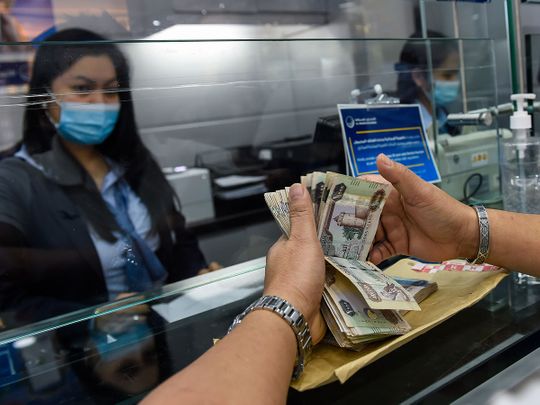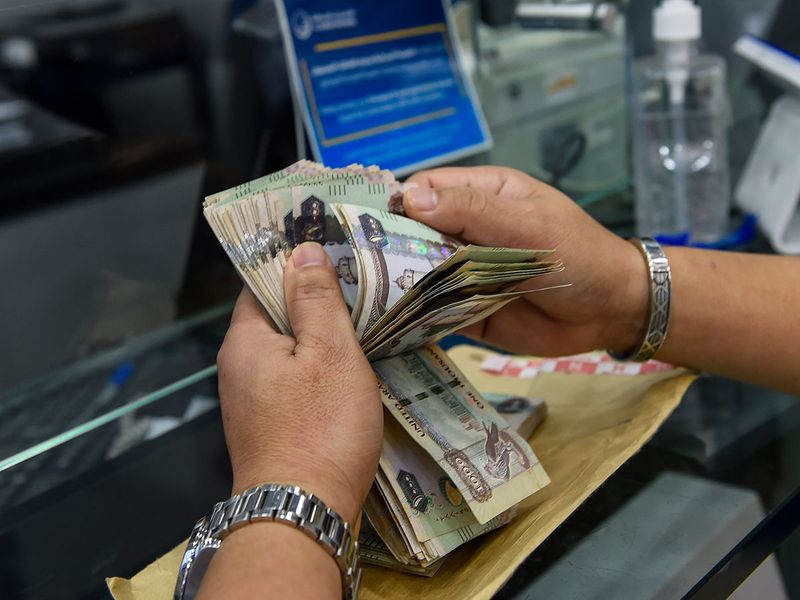
Dubai: When it comes to sending money back home, it is vital to know whether it is currently an ideal time to remit. To understand whether it is or isn’t, one should first find out if your currency back home is expected to rise or fall in the days to come.
According to statistics, South Asians, which – among others – include people from India, Pakistan and the Philippines, make up nearly 60 per cent of the UAE population. So, it would be financially beneficial to regularly analyse currencies of the above countries, be it – the Rupee or the Peso.
Here is an analysis of how these aforementioned currencies have been performing and expected to perform in the coming weeks and months, to help understand whether remitting money now is profitable or cost-effective, or should you wait it out for a few weeks for a better rate to come along.
Where is the Indian Rupee headed in the rest of April?
With the Indian rupee currently at 20.34 to the UAE dirham, the Indian rupee last weakened to 74.7 against the US dollar.
According to research, the Indian rupee is expected to average between Rs20.4-21 against the UAE dirham in the remaining days of April.
However, these rates are seen persisting towards mid-May, rates are seen dropping to as low as Rs20.7, and as high as Rs21, before rebounding back slightly by the end of the month.
During the rest of 2021, analysis indicates that rates will stay around the 21-level or higher, indicating that now is currently the most cost-effective time to remit, when compared to the remainder of the year.
Pakistani Rupee seen dropping in the coming weeks
In Pakistan, the buying rate of the US dollar was 152.88 Pakistani rupee (41.6 versus UAE dirham).
According to research, the Pakistani rupee is expected to drop to Rs40.7, from the current Rs41.6 against the UAE dirham in the remaining days of April – dropping to as low as Rs40.4 in the first couple of weeks of May.
During the last two weeks of May, the Pakistani Rupee will mostly average between 40.9 and 40.4.
Global ratings agency Fitch Solution predicts the Pakistani currency to average weaker at Rs171.15 for every US dollar in 2021, citing higher structural inflation in the US.

Where is the Philippine Peso headed in the weeks to come?
According to research, the Philippine Peso is expected to average between 13.19-13.26 against the UAE dirham over the next one month, with no major fluctuations seen – making it ideal to send money any time over the next coming weeks.
The average exchange rate against the UAE dirham in April will be 13.2, with the currency slipping just 0.2 per cent in the month. Over the month of May, rates are expected to stay largely the same at the end the month while the exchange rate averages at 13.24.
However, during the following months of June and July this year, rates are expected to spike about 1.4 per cent to over 13.36. So, it would be cost-effective to remit during the preceding months. The Philippine Peso dropped 1 per cent during the last quarter.
What about other South Asia currencies?
When analysing other South Asia currencies, even the Nepalese currency, which remains pegged to the Indian currency since 1994, has been falling.
With the world’s worst performing currencies in the entire Asian region, it can be ascertained that some South Asian currencies are getting weaker with respect to the standard US dollar. When analysing exchange rates for Bangladeshi Taka against the UAE dirham, rates averaged at 23.09 over the last 180 days.
The Thai Baht was the worst performer among commonly traded Southeast Asian currencies during the first quarter, as its fundamentals were eroded due to lack of tourist spending.
The Baht depreciated 4 per cent against the US dollar to 31.24, according to Refinitiv data. The fall stood out from regional peers, which also were in decline. On Wednesday last week, the Baht reached the cheapest level in roughly half a year.
Among other regional peers, the Indonesian rupiah and Malaysian ringgit fell 3.4 per cent and 3.1 per cent respectively in the first quarter. The Singaporean Dollar also fell over 1 per cent, while the Vietnamese Dong remained virtually flat.
The Myanmar Kyat, a rarely traded currency in the region, recorded a 5.6 per cent drop during the quarter. The Refinitiv data showed that the Myanmar kyat has not changed in the currency spot market in the past two months on account of economic instability.








